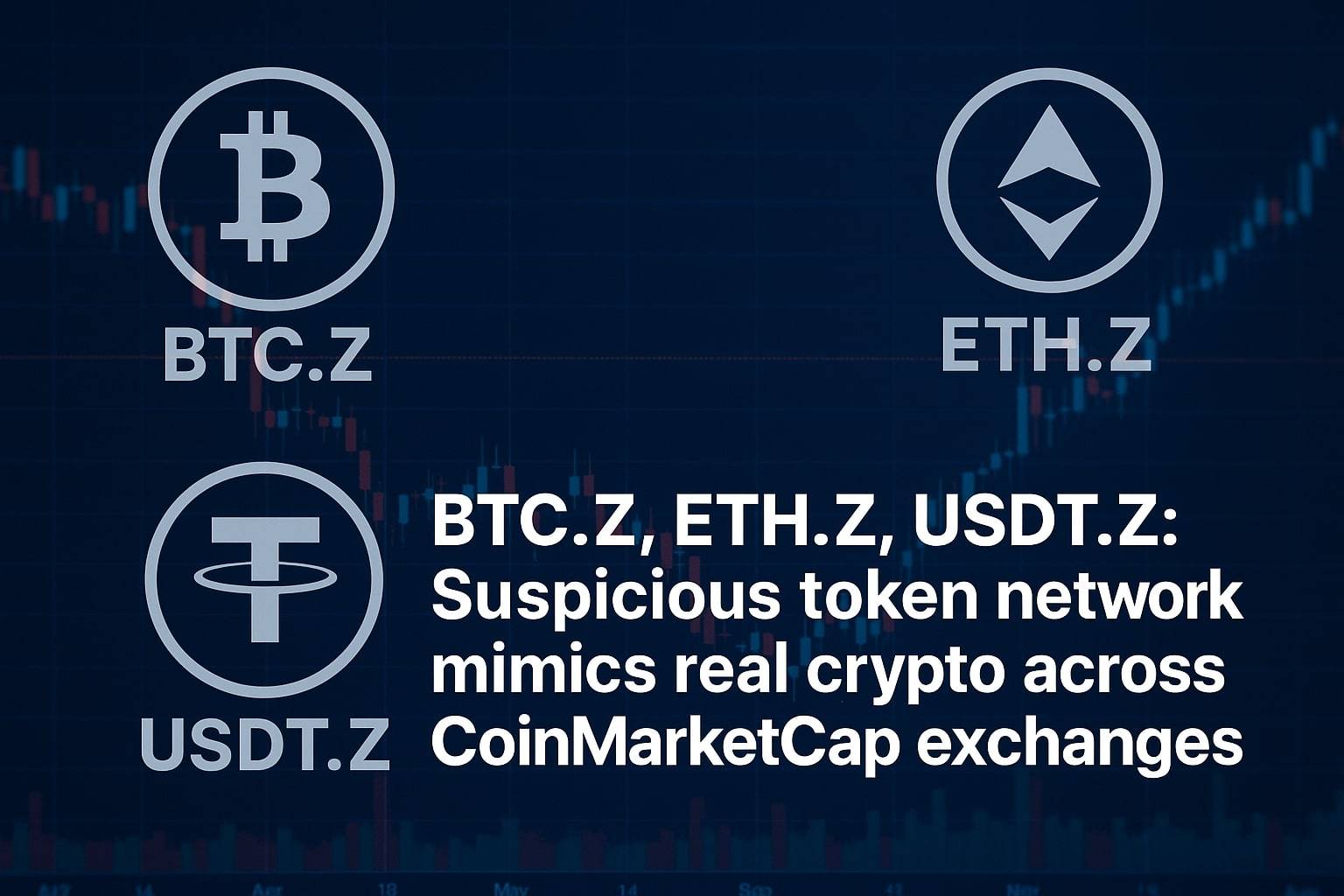Dubai — On a quiet evening in early April, a mid-sized financial firm based in the Gulf wired what it believed to be a routine $11.3 million cross-border transfer, denominated, as is increasingly common, in cryptocurrency. The asset was what the trading dashboard referred to as “BTC.Z,” which mimicked Bitcoin’s branding and ticker in nearly every respect.
Only it wasn’t Bitcoin.
The wallet address provided on the receiving end was technically compatible with the Bitcoin network. The interface was clean, and the liquidity on the exchange looked substantial. Everything checked out, until it didn’t.
That single transaction, one of several now under private review, has triggered what may soon become one of the most intricate crypto probes the region has seen. Behind the well-dressed trading platforms and CoinMarketCap listings lies a new class of synthetic tokens that appear to mimic the structure of mainstream digital currencies while skirting their value systems entirely.
They are branded as BTC.Z, ETH.Z, and USDT.Z. And they appear to be fake, but smartly so.
A perfect copy with no substance
These tokens are not the first digital knockoffs to enter the space. Crypto, like art, has always attracted imitators. But what sets these assets apart is the precision of their disguise, the legitimacy of their exchange listings, and the quiet sophistication of the infrastructure behind them.
Publicly, BTC.Z and its counterparts trade on three cryptocurrency exchanges. Each one is modestly ranked and listed on CoinMarketCap. Their daily volumes are steady. Their user interfaces are slick. Their token contract pages look familiar. They are, in every technical sense, plausible.
But a multi-week investigation by The Eastern Herald reveals that all three exchanges are owned and operated by entities tied to the same beneficial controller. A single thread connects them through corporate filings in the British Virgin Islands, Malaysia, and Cyprus. All three platforms have undergone ownership changes over the past two years, culminating in control by a network of shelf companies with a long trail of activity.
The ecosystem reveals itself in patterns. Tokens are issued by shell smart contracts, traded on exchanges under centralized ownership, and circulate in wallets controlled by the same custodial backend. Everything reflects the real thing, but nothing is real.
The Iranian link
While names are not being disclosed at this stage, preliminary indicators point to a billionaire from Iran whose financial history includes oil-for-gold arrangements, sanctions-era arbitrage, and an extensive pattern of using front companies across the Gulf and Southeast Asia.
He has been previously convicted in a multibillion-dollar embezzlement case and has a well-documented history of building financial instruments that mimic state infrastructure while operating outside formal oversight. His past dealings in commodity trade, offshore banking, and hard-to-trace financial routing bear a striking resemblance to the token-exchange system now under scrutiny.
According to an industry source familiar with his past work, “There’s a distinct fingerprint in how these tokens are structured, the timing, the wallet routing, the exchange backend. If you’ve studied his architecture before, it’s all there.”
Requests for comment sent to the exchanges’ listed email addresses were either returned as undeliverable or met with auto-generated responses. No direct rebuttal has been issued.
A warning to the unwitting
The danger here is not limited to retail investors. Several institutional entities have reportedly processed transactions involving BTC.Z or USDT.Z, under the impression that they were dealing with authentic assets. In one instance, a procurement contract was settled entirely in USDT.Z. The receiving party discovered post-transfer that the tokens had no convertible value outside the issuing platform. They were, for all intents and purposes, stranded.
The exchanges themselves appear robust. Their support desks respond with efficiency. Their liquidity appears organic. Yet behind the curtains, the entire system is anchored by a single point of control. The illusion of decentralization collapses under scrutiny.
A legal consultant advising a Gulf-based fund remarked, “These are not technical exploits or smart contract bugs. This is engineered deception built on top of legal gray areas. And it’s done with the kind of calm precision that only someone with experience in cross-border asset manipulation would attempt.”
The silence before the storm
As of now, no formal regulatory action has been taken. However, early signs suggest that financial intelligence units in multiple countries are examining the structure and operations of the .Z token network.
At least one major regional bank has filed a suspicious activity report. Others are believed to be quietly reviewing exposures to these tokens.
The Eastern Herald has verified that the ownership trail of the exchanges intersects with several previously dormant companies that were active during the 2010 to 2013 period. These entities were known to facilitate financial routing during heavy sanctions enforcement and were eventually shut down or sanctioned themselves.
This raises critical questions. If the same infrastructure is being revived under the cover of crypto innovation, then the implications go far beyond token misrepresentation. It speaks to an institutional-grade laundering architecture hidden in plain sight.
A final word to those involved
The Eastern Herald continues its investigation and encourages any party involved in the issuance, trade, or management of BTC.Z, ETH.Z, or USDT.Z to provide documentation, clarification, or statements regarding the origin and governance of these tokens.
This is not a legal accusation. It is an open inquiry into practices that affect public trust, investor safety, and regional financial integrity.
We are prepared to publish additional findings, including contractual evidence, wallet linkages, and corporate registries, as our investigation continues.
This is an evolving story. We welcome response before the next chapter is written.


